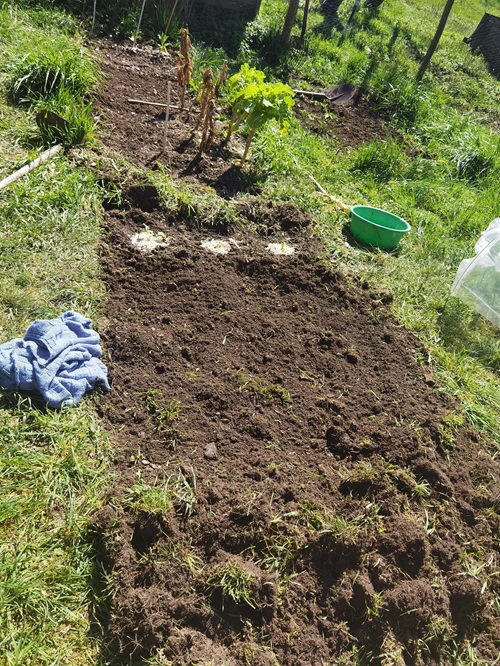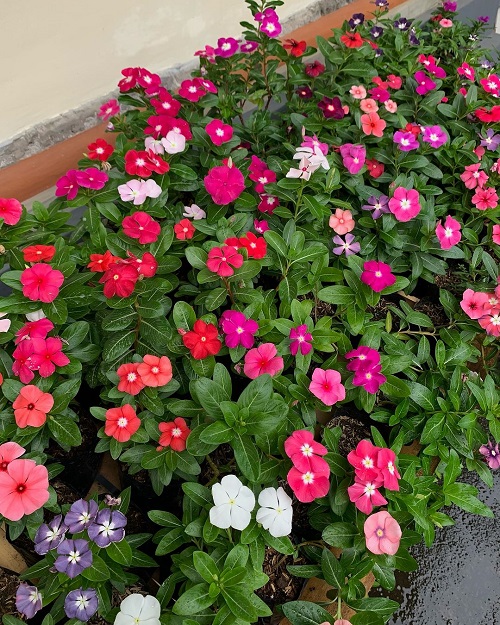Don’t just watch your garden fade with the season—here’s What To Do With Annuals When They Finish Blooming!
Fall is a busy time for gardeners! As your annuals finish blooming in spring and summer, it may feel like your garden’s cycle is winding down. But don’t hang up your gloves just yet—there’s much work to be done!
Annuals, which complete their life cycle in one or two growing seasons, die once they finish flowering. So what do you do with those dead and dried-up plants? Digging up unsightly holes all over or simply letting them rot aren’t the only options. Let’s explore!
What to Do With Annuals When They Finish Blooming
1. Let Your Annuals Self-Seed

Why wouldn’t a gardener want to save money and let these blooming plants self-seed? Annuals like poppies, calendula, and alyssum self-seed, and if you don’t disturb them, you will get beautiful flowers at the same time next year!
Keeping these annuals may also save you from starting and planting them again. However, note that not all annuals self-seed, and often, it may be a little haphazard where and when a new plant shows up!
2. Save the Seeds

And so, if your favorite flower doesn’t self-seed, or you just don’t like the look of dead, dried-up plants just rotting away in the garden, save the seeds for planting the next year! Make sure you only pick healthy and preferably native plants or the ones that can grow true from seeds and wait till the blooms dry up and form seed pods.
Once the seeds get brown and are fully dry, gently shake or snip off the seedheads, place on a tray and clean them up of debris. Air dry them for at least week and store away in airtight envelopes with proper labels and dates. You can even refrigerate them.
3. Leave the Roots
Plant roots and microorganisms share a mutually beneficial relationship. Leaving the roots of your annuals intact even after they die feed useful soil organisms. As roots decompose, microbes feed on them, and in turn break down organic material and add nutrients to the soil.
These root pathways also improve aeration and moisture, and act as hosts to fungi. Its also a natural form of composting, and by not tilling the soil, carbon remains sequestered in the ground.
4. Cut Back the Whole Plant
If you want to keep the garden clean, there is no harm in chopping down the whole plant to ground level. This also has benefits; you can use the stems, leaves, and roots as organic mulch in your garden.
When the months pass and you enter the new year, the plant will have decomposed and enriched your soil.
5. Overwinter some Annuals

Plants like impatiens, begonias, geraniums, and coleus are examples of annuals that you can bring indoors for overwintering after the flowering is completed. These plants act as soft perennials under ideal conditions.
This trick works primarily on potted plants, as these can be easily moved inside for overwintering. So, if you have your favorite potted varieties, preserve and shelter them through winter.
6. Prepare Soil for the Coming Season

Another option is to clean the ground, especially if you have bugs, pests, or mildew, and start afresh for the upcoming growing season. Dig the top layer of soil, clear the weeds, and then add some organic fertilizers to enrich the medium.
You could also add mulch to that patch of land, as this will help suppress weeds, nourish and insulate the soil, and prevent erosion, especially on a slope.
7. Create Leaf Mold
If you have many annuals in your garden, you can use them to create a leaf mold for your garden soil. You just have to pile up the leaves and allow them to break down so that you can use them as compost later.
A quality leaf mold that is more than two years old can be highly beneficial for seed sowing or as potting compost. If you don’t have years of patience, you can use it as mulch.
8. Use Dried Flowerheads For Decor
Check out some DIY home decor ideas using spent flowerheads of plants like celosia, strawflowers, or bachelor’s buttons; they are perfect for creating beautiful home decor. Dried celosia can be a great addition to dried floral arrangements and bouquets.
Strawflowers are best if you want to make boutonnieres and flower crowns for special occasions at home.
That’s it! Do these simple things with annuals after they finish blooming, and you’ll have a beautiful, healthy garden through all seasons!




